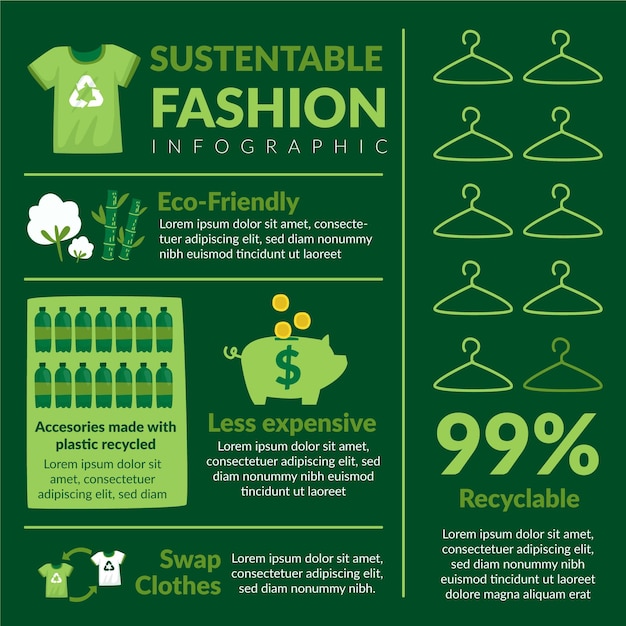Stay Ahead of the Contour by Checking Out Innovative Fashion Fads
In a sector as vibrant as fashion, remaining ahead involves even more than just adhering to present trends-- it requires an expedition of development. The convergence of modern technology and style advertises a new era of customer engagement.

Embracing Smart Textiles
Over the last few years, the garment industry has actually witnessed a transformative change with the assimilation of smart textiles, a cutting-edge technology that blends innovation with fabric. This development stands for not just a combination of visual appeals and capability however also a substantial leap in the direction of sustainability and personalization in vogue. Smart fabrics, also called e-textiles, embed sophisticated electronic devices such as sensing units and conductive strings within the material, allowing garments to communicate with the environment or the wearer.
These fabrics are made to monitor physical criteria, such as heart price or body temperature, providing real-time health analytics. Past wellness applications, clever fabrics are additionally being made use of for flexible clothing, which can alter color or pattern in response to ecological stimuli, therefore offering a dynamic fashion experience.
Moreover, the advancement of energy-harvesting fabrics that create power from activity or sunlight is leading the way for self-sufficient wearable technology. This innovation is interesting eco mindful consumers and designers intending to reduce the ecological footprint of style. As study and growth in this area advance, smart fabrics are expected to become significantly widespread, improving the landscape of modern style with their multifunctional capacities.
The Surge of 3D Printing
Revolutionizing the production landscape, 3D printing has actually become a game-changer in the fashion business. This innovative modern technology has actually allowed developers to press the boundaries of creativity, creating detailed and customized garments that were previously unimaginable. By leveraging digital style and additive manufacturing, 3D printing promotes the creation of complex geometries and patterns, enabling developers to explore brand-new textures and structures.
A significant advantage of 3D printing in fashion is its capacity to create on-demand, reducing waste and minimizing stock requirements. This effectiveness not just optimizes production processes yet additionally permits quick prototyping, allowing designers to bring their visions to life in a much shorter duration. Moreover, 3D printing supports personalization somewhat unmatched by conventional techniques, providing unique designs and personalized fits customized to specific consumer choices.
The rise of 3D printing has actually likewise equalized fashion, making it available to arising designers that can now fabricate top notch items without substantial economic investment in standard manufacturing infrastructure. As innovation remains to advance, the fashion business is poised to harness the full potential of 3D printing, checking out brand-new products and techniques that will most certainly redefine exactly how style is conceived and created.
Lasting Style Developments
As the garment industry grapples with journalism need for ecological obligation, sustainable fashion advancements have actually emerged at the leading edge of transformative modification. The growing understanding of ecological effect has actually sustained a change towards even more eco-conscious practices and products. Designers and brands are now focusing on sustainability, incorporating methods that lessen waste and reduce carbon impacts.
One substantial development is the increase of round fashion, which highlights recycling and upcycling to extend the lifecycle of garments. This technique not only minimizes waste but likewise urges consumers to adopt a much more conscious strategy to apparel intake. Additionally, the use of sustainable products, such as organic cotton, hemp, and recycled polyester, has actually acquired grip. These products need less water and power throughout manufacturing, considerably reducing environmental impact.
Another advancement depends on the fostering of innovative dyeing strategies that make use of waterless processes or natural dyes, consequently lowering the vast quantities of water and chemicals generally made use of in fabric dyeing. Furthermore, developments in biotechnology have actually led to the production of lab-grown leather and fabrics, providing cruelty-free and ecologically friendly choices to traditional materials. Via these pioneering efforts, the garment industry is making purposeful strides in the direction of an extra lasting future.

Tech-Integrated Garments
Tech-integrated garments represents a revolutionary combination of fashion and technology, improving just how people engage with their clothes. This cutting-edge domain is noted by the addition of clever fabrics and embedded digital parts, improving both capability and aesthetic appeal. From health and fitness trackers installed in sports apparel to warmed coats regulated via smart device apps, tech-integrated apparel uses customers unmatched convenience and adaptability.
Pioneering brands are driving this trend, concentrating on creating garments that reply to environmental stimulations or individual commands. For example, some garments can transform color or pattern in action to temperature level changes, while others include biometric sensors to check health and wellness metrics like heart price or tension levels. The seamless assimilation of innovation into textiles additionally encompasses ecological sustainability, with efforts to establish self-cleaning materials or garments that adapt to weather problems, hence decreasing the demand for numerous layers.
Additionally, the arrival of wearable innovation is not just restricted to garments however includes accessories Learn More like watches and eyewear, more expanding the range of tech-integrated fashion. As the market proceeds to introduce, the potential for personalization and customization in apparel grows, supplying consumers one-of-a-kind, tech-enhanced fashion experiences that provide to their private demands and choices.
Future of Virtual Fashion
In recent years, the future of online fashion has emerged as a transformative pressure within the industry, leveraging improvements in electronic modern technology to redefine just how style is produced, experienced, and taken in. By integrating increased fact (AR), virtual truth (VIRTUAL REALITY), and 3D design devices, developers can currently craft immersive and interactive experiences that go beyond conventional style borders. Digital style permits the development of garments that exist exclusively in digital environments, providing endless possibilities for advancement without the restrictions of physical manufacturing.
This electronic shift not only provides possibilities for imaginative expression yet also addresses sustainability news problems intrinsic in typical style techniques. Cape Town Sustainable Fashion. By getting rid of the need for physical resources, digital fashion lowers waste and decreases carbon footprints. Furthermore, the surge of online style lines up with the raising customer need for unique and tailored experiences, as digital garments can be personalized and tailored to specific preferences effortlessly

Final Thought
The fashion sector's future lies in the integration of lasting practices and innovative technologies. Online fashion is positioned to redefine customer interactions.
In current years, the style market has experienced a transformative change with the combination of smart fabrics, an innovative innovation that mixes innovation with fabric.As the style industry grapples with the pushing requirement for environmental obligation, lasting style technologies have actually emerged at the leading edge of transformative change.In recent years, the future of online style has actually emerged as a transformative force within the market, leveraging advancements in digital modern technology to redefine just how fashion is created, experienced, and consumed. The rise of online fashion lines up with the raising consumer need for distinct and individualized experiences, as online garments can be customized and customized to private choices with convenience.
The fashion industry's future lies in read here the assimilation of ingenious technologies and lasting methods.